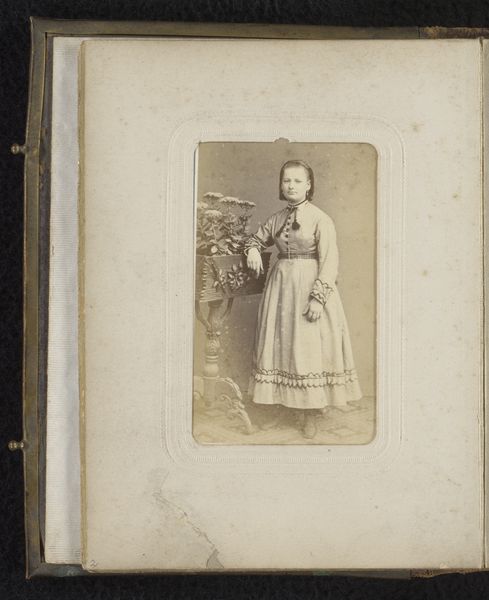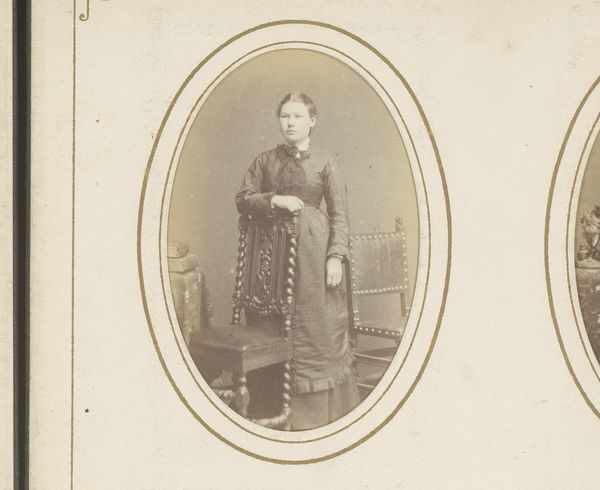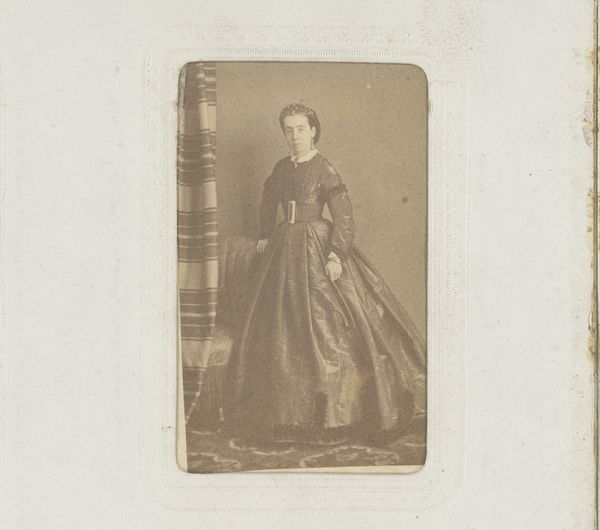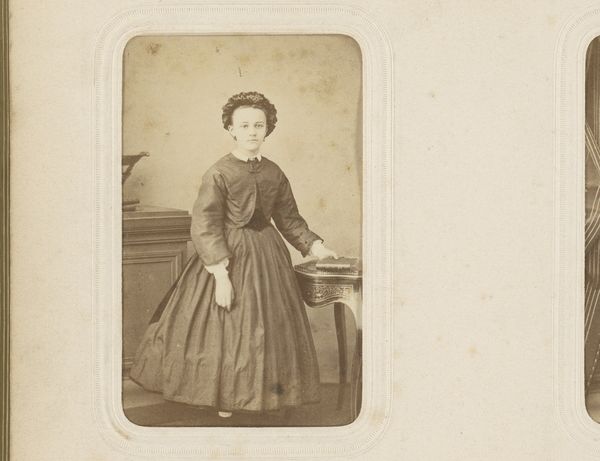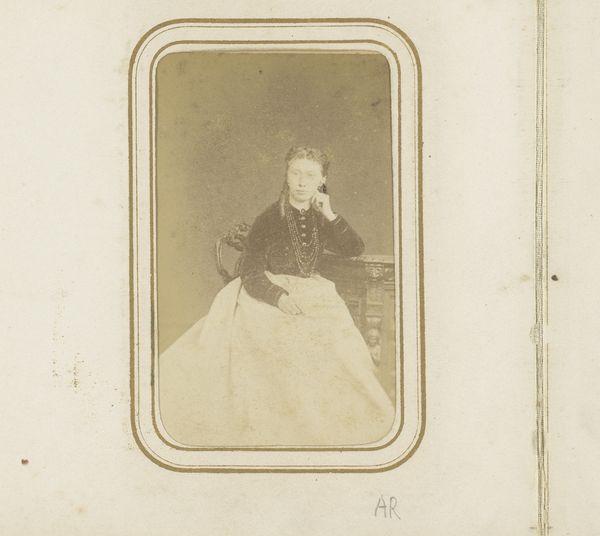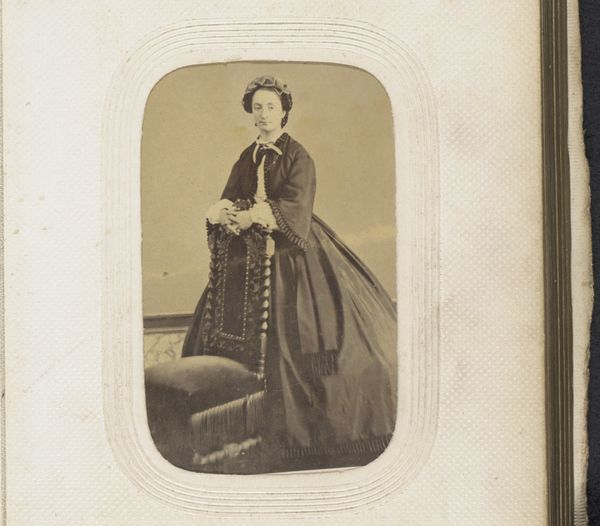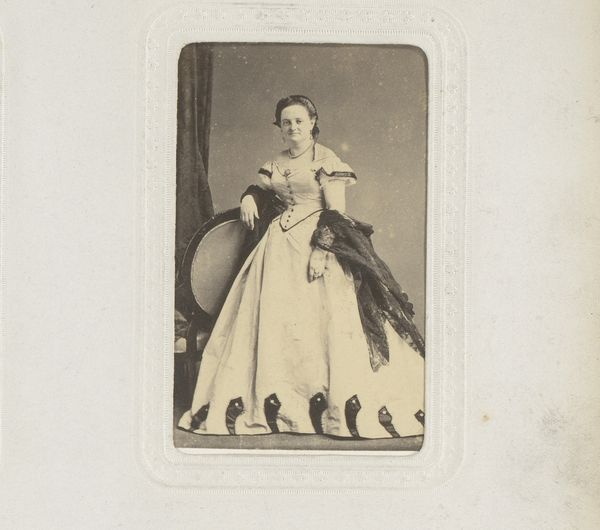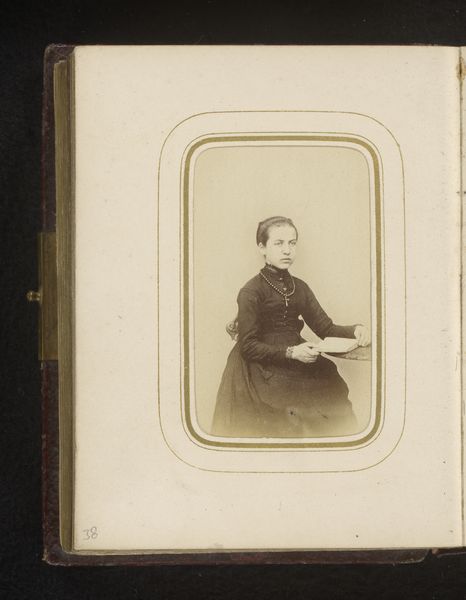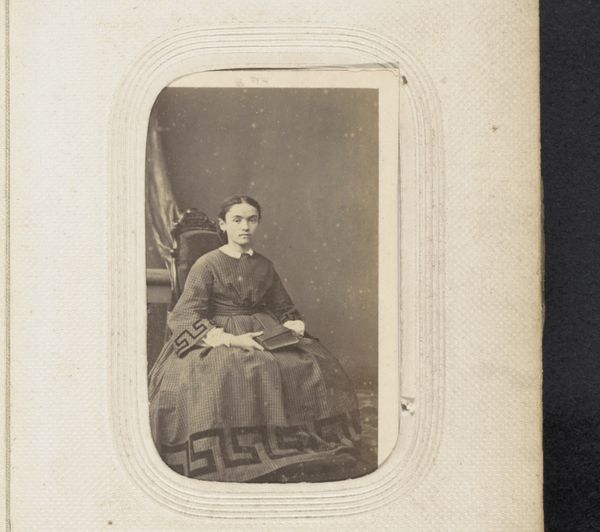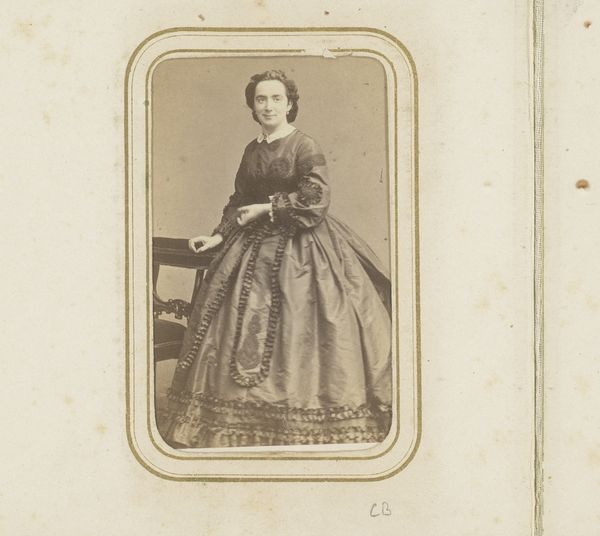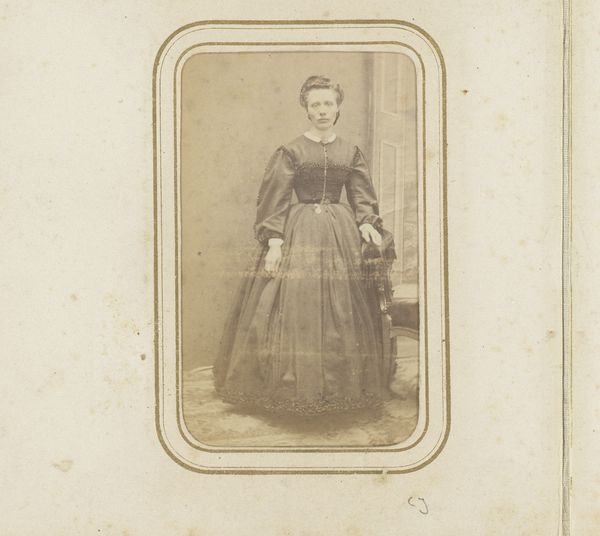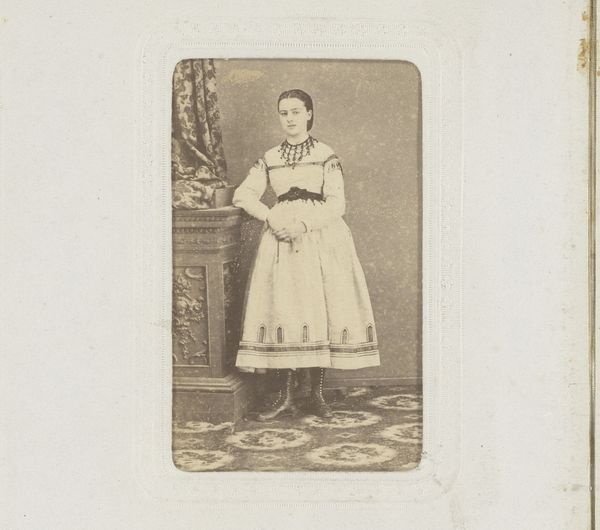
Portret van een staande jonge vrouw 1850s - 1860s
0:00
0:00
hermanusphilippusjacobusschuiten
Rijksmuseum
photography, gelatin-silver-print
#
portrait
#
photo of handprinted image
#
aged paper
#
toned paper
#
vintage
#
photo restoration
#
parchment
#
archive photography
#
photography
#
historical photography
#
old-timey
#
gelatin-silver-print
#
19th century
#
realism
Dimensions: height 83 mm, width 51 mm
Copyright: Rijks Museum: Open Domain
Curator: Here at the Rijksmuseum, we have an intriguing portrait titled "Portret van een staande jonge vrouw," or "Portrait of a Standing Young Woman." This gelatin silver print was created sometime in the 1850s or 1860s by Hermanus Philippus Jacobus Schuiten. Editor: My immediate reaction is one of quiet solemnity. The sepia tones contribute to an overall mood of restrained dignity, and the young woman’s gaze…it’s very direct, very contained. Curator: It is indeed captivating. The photograph provides us a window into the visual language of mid-19th century portraiture, where the sitter's posture, clothing, and props carry meaning. The subject's dress, for instance, while simple, hints at a certain social standing. Editor: Absolutely. Notice the deliberate use of line: the verticality of her posture echoed in the buttoned-up bodice, and contrasted by the soft curve of her skirt and the rounded back of the chair. It creates a balanced composition that nonetheless emphasizes the uprightness – almost severity – of the figure. Curator: That severity, I believe, speaks to the prevailing social expectations placed on women during this era – expectations of modesty, restraint, and a sense of duty. The chair she leans on appears both as a support and a barrier. Editor: An interesting point. Semiotically speaking, the chair serves a dual purpose. It's a physical prop that supports her, while visually conveying the idea of social constraint or perhaps even her station. It's interesting how those small tonal details create an amazing level of meaning. Curator: Considering Schuiten's work within the broader context of early photography, we can also interpret this as an exercise in capturing not just likeness, but also a specific psychological presence that reflected middle-class aspirations and values of that era. These historical photos serve as powerful cultural artifacts as they become windows into how sitters chose to represent themselves. Editor: I find it interesting to note how an ostensibly simple portrait, so clearly structured in its composition, has such reverberating symbolism and historical context informing it. It underscores the power of art to contain so much meaning within carefully crafted formal structures. Curator: Precisely. The apparent simplicity allows these historical undertones to come alive, highlighting how cultural continuity remains embedded in seemingly straightforward imagery. Editor: Yes, I agree wholeheartedly. I walk away considering how technical simplicity and symbolic depth combine in these fascinating archive photographs, and how it speaks to the lasting impact a photo can have across generations.
Comments
No comments
Be the first to comment and join the conversation on the ultimate creative platform.
